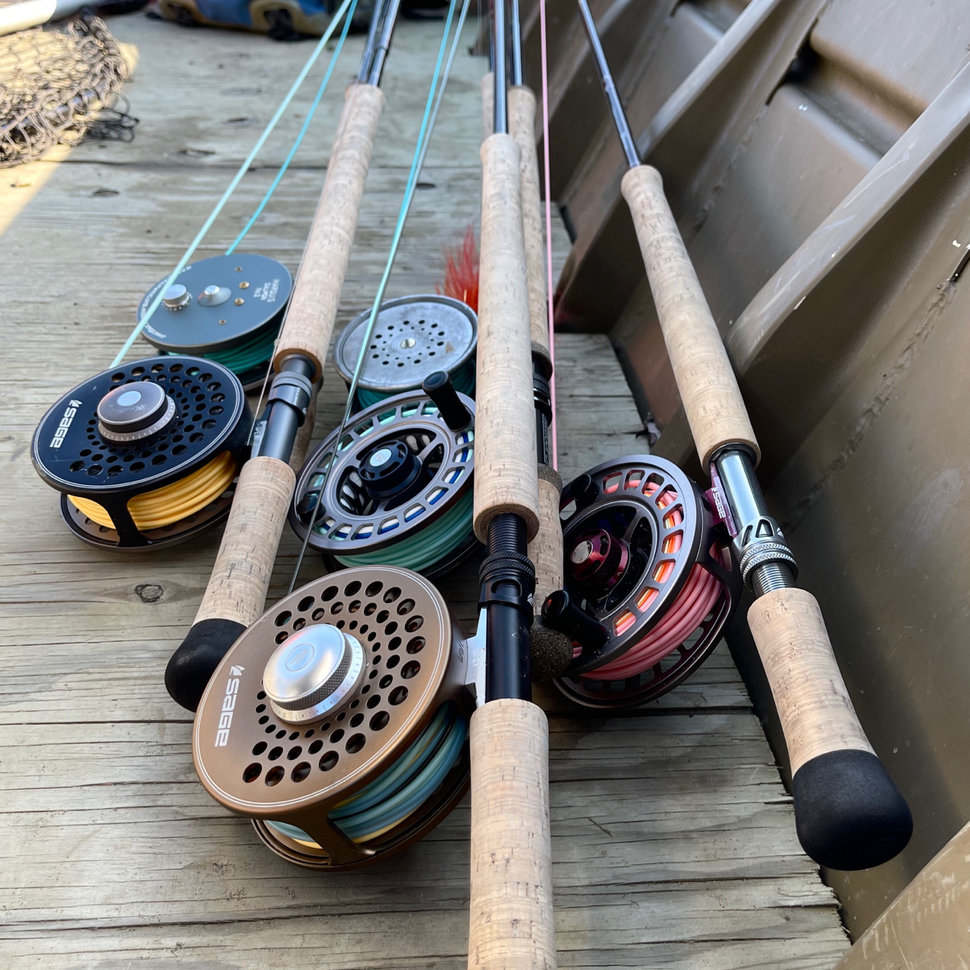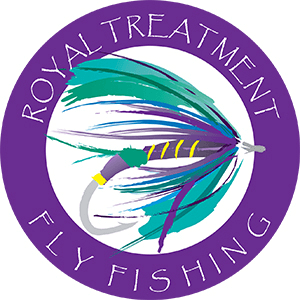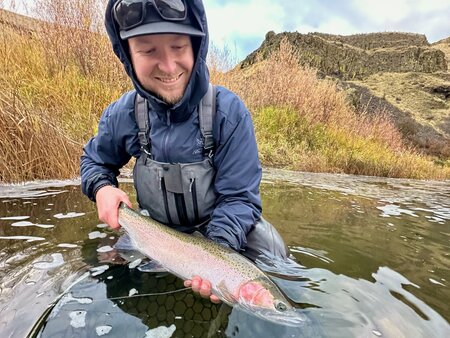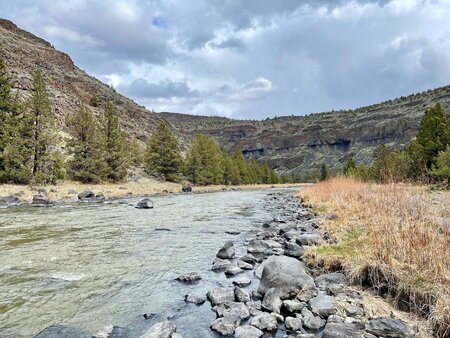In Search of the King

I sit here writing this and I’m grenaded. 8 days of fishing for 14 hours will do that to you. Every joint and muscle aches, my fingers are cracked and bleeding, I have sleep exhaustion, cramped hands, and I’m covered in mosquito bites. Sadly I’m sitting in the airport in King Salmon on my way home from the best King fishing trip I’ve ever had.
Before I start in on the trip, you need to know about my fishing partner George “Geo” Cook. In my world, he’s the factory rep for Farbank( Sage, RIO, and Redington) Tibor, and Fishpond, but he’s much more than that. 2023 will mark his 40th year of King fishing in Alaska and he is quite possibly the KING of Kings. Originally he started guiding for them in 1983 on the Alagnak River. Not only is Geo a fisherman he is also a well-known hunter. In the 80’s Geo started working for Sage teaching fly fishing schools and then got hired to be the rep.
George has a big personality, he has lots of sayings and catchphrases and is notorious for naming things. You may or may not have heard some of them but Mega is always coming out of his mouth, Huck Mega, that’s Mega, and any other combo. But there were other things that were funny slang terms, mow mow nap: short for cat nap, minis which were basically an open face peanut butter and jelly sandwich and then folded in half, half as much work and twice as delicious. (Don’t ask me, I’m not good with math?), bear sees first, which is where Carter was sleeping. The more time you spend with George the more you learn.
Since George is the Sage and RIO rep there was no shortage of rods and lines. It was actually more than I’ve ever taken on a trip and I liked it. It gave you lots of options, you could find what you liked and have a few choices. Long and short sink tips, full sinking Skagit lines, and long rods for distance, short rods for tight quarters, if there was a water type or situation there was a rod for it.
This King Fishing trip was going to be a new adventure for me, I guided kings for 5 seasons south of King Salmon on the Sandy River. The Sandy is a more classic smaller AK river, tail outs and cut banks, with a short tidal section, so there is holding water within a mile of the ocean. And I would estimate the Sandy flowed at around 1800-2500 CFS. Where we were going was wildly different, the river was running approximately 15,000-20,000 CFS, and the tidal section runs for well over 30 miles. The river is so big they run barges up it loaded with cars and trucks and whatever else you might need. Not to mention the taxi service, i.e. float planes landing up and down the river.
The other part of this fishing that was going to be drastically different besides the size of the river is that we would be fishing over pods of moving fish so trying to intercept them as they swam by. That means long casts with heavy tips out into the deep trying to get the fly in front of moving fish till the river was full then we could fish over holding fish in spots.
Our first day was a late start after we were dropped off and more of a get the rods setup and figure out the lay of the land. The rod setup took a little longer than usual as we had quite a quiver. Geo brought 13 outfits all pre-rigged with sink tips and leaders. All rods had some form of Skagit line ranging from Rio Skagit Max Power and Launch to the Skagit Game Changer with some T-17 tips from 7.5’ to 13’. This would enable us to engage the fly quickly and fish a multitude of depths depending on the specific run and what part of the tide we were fishing. If the tide was high slack or low slack we might be using shorter tips if it were high and falling we might be using Game Changers with longer tips to get deeper in the column. The fly was probably the least important part of the equation, they needed to be big, four inches, and basically chartreuse and green for the most part.
Our first session was basically a blank. We got a good casting warm-up, and some time to familiarize ourselves with the water, and how the runs fished.
Now this river is big and we were basically never going to touch the bottom. There were very few snags and no tundra clumps or root wads to hang up on. This allowed us to use heavy leader mostly 25lb maxima as we weren’t going to have to worry about losing heads and flies. And because the water was so deep if you felt anything it was sure to be a grab.
We headed back to camp for a cocktail before our evening session. We had made sure the coolers had cocktail ice and we had mixers and plenty of bourbon. This is where the trip started to go sideways. We filled our cups with ice and made two perfect cocktails. Just what we needed to cure our hangover from the previous night in anchorage, and to get us motivated for the evening session. I took my first drink and was like this is a weird cocktail. I took another drink and thought to myself this is not right. I took a third drink to confirm what I had thought of the first two and I stood up and poured my drink out. This sent a wave of relief over Geo as he was thinking the exact same thing. My suspicions were confirmed when I looked at my cup and I could see it was full of salt. Somehow the kitchen had ended up putting salt on the ice to help keep it frozen longer. In our eyes, it was an April fools joke in June. Geo told me he didn’t want to say anything because he thought it was the brown liquor I had brought and he was being nice.
I asked the guide who was staying in camp for some fresh water to clean out my cup and he was like “so about that, the water jugs were in the container with the gas and they are contaminated”. Strike two…
The good news was that across the way there was basically a little “store” I use the term loosely because it was a guy who had a house on the airstrip with an ice machine and some soda pop and candy bars for sale. We bought a bag of ice from him for the bush price of $15 for 10 pounds. That’s basically 5 times what you pay here. But beggars can’t be choosers and we were back in the game.
We finished out the evening fish with not much fanfare but knew we would soon be rewarded with fresh fish. The week we were fishing was going to be the biggest tides of the season, with 20’-27’ exchanges. So it was only going to be a matter of time.
The next morning we were up early ready to go. We were well-rested, free from hangovers, and ready to go. We started each morning off with a rod draft to see who was going to start the day out in the boat. We typically started with 6-9 rods to see what was going to work best.
That first day we hooked a few fish Geo landed a few and I landed one. This was a good sign as the day before we got blanked. We fished till late and made dinner around 10:00 pm. We were settling into a rhythm. Up early 6:00-6:30 pull on our waders and head straight to the boat with rods, flies, and beverages. Run upriver while all the guides were still in camp and fish for a few hours without any boat traffic. Take a late morning lunch between 10:00 and 11:00 and then back to fishing till 5:00 when we come in for a late lunch and finish off our fishing till 10:00 and come back for dinner. These fishing hours aren’t for the weak.
The next day we were right on time. We headed upriver and broke the run into two pieces. I took the low and Geo took the high spot. I got three grabs and landed two and Geo landed four. Things were definitely getting better.
It was now 10:00 am and we headed back to camp for breakfast. The tide was fast coming in and there were probably 30 boats trolling the mile-long stretch in front of camp. We ate a lunch of hand-cut bacon and fried potatoes and watched boat after boat hook and play fish. We were excited to get back out on the water and get back to fishing. We slid right into the middle of them and took our spot on the bank. The boats soon figured out what we were doing and made space for us. You could hear the clients in the boats talking about us. “What are they doing?” “Are they fly fishing?” “Do they put bait on there?” “Why don’t they cast upriver?” It was kind of funny and soon they saw it was effective. We ended up landing quite a few during that session and hooked even more.
Fishing continued to improve the next couple of days, hooking and landing more and more as the days progressed. Our catch rate was progressing quickly as fish flooded into the system. In between fishing sessions or during short breaks we talked quite a lot about tactics for salmon. Fly engagement, which was more important, distance or depth, and the decline of anadromous species.
As the week progressed and we became more familiar with the rods we ended up with favorites and named a bunch of them, Proto for a Sage prototype 8136, The Hedgehog for the Sage Sonic 9140, Frenemy for the Sage One 8126. We had 6 or 7 rods that made the cut every day.
In the end, we ended up hooking and landing more fish than should have been allowed, we laughed a lot and talked quite a bit about the history of salmon fishing. This was definitely one of the best trips I’ve ever been on. And I look forward to doing it again in the future.




